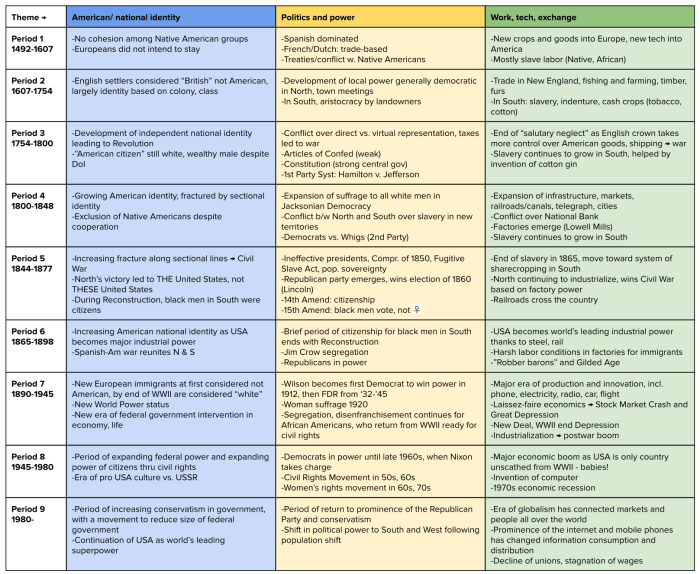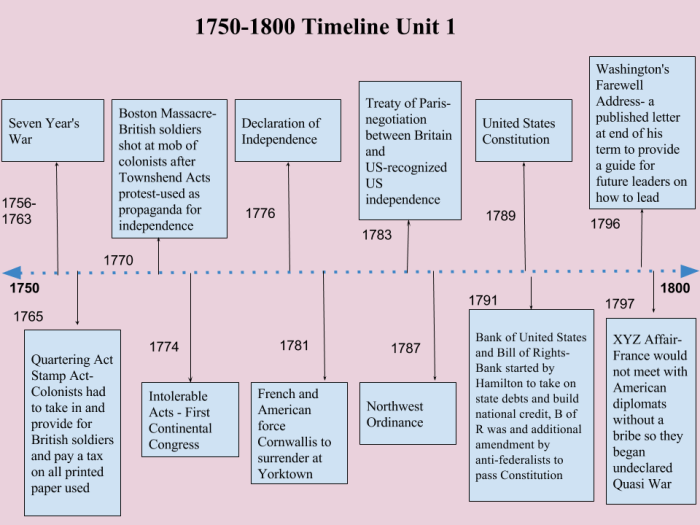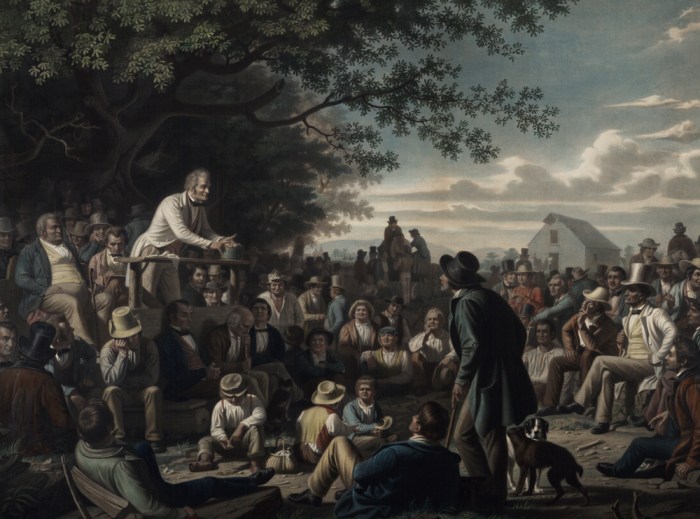Embark on a captivating journey through the Civil War and Reconstruction era with our comprehensive Period 4 APUSH Study Guide. This meticulously crafted resource delves into the pivotal events and transformative changes that shaped the destiny of the United States.
From the outbreak of the Civil War to the challenges of Reconstruction, we explore the intricate causes, key battles, and profound impact of this tumultuous period on American society, politics, and culture.
The American Revolution (1763-1789)
The American Revolution was a period of great upheaval and change in the British colonies in North America. The revolution began with a series of protests against British policies, and eventually led to the colonies declaring independence from Great Britain.
Causes of the Revolution
There were a number of factors that contributed to the outbreak of the American Revolution. These included:
- British economic policies that favored British merchants over American colonists
- British attempts to limit the political rights of colonists
- The presence of a large and growing population of colonists who were increasingly resentful of British rule
Major Events of the Revolution
The American Revolution began with a series of protests against British policies. These protests eventually led to the outbreak of armed conflict between the colonists and British troops.
- The Boston Tea Party (1773)
- The Battle of Lexington and Concord (1775)
- The Declaration of Independence (1776)
- The Battle of Saratoga (1777)
- The Treaty of Paris (1783)
Significance of the Revolution
The American Revolution was a significant event in the history of the United States. The revolution resulted in the creation of a new nation, the United States of America, and had a profound impact on the development of democracy around the world.
The Early Republic (1789-1828)

The early American republic faced numerous challenges and achieved significant accomplishments under the leadership of George Washington and other Founding Fathers. This period witnessed the establishment of a new government, the development of political parties, and the westward expansion of the nation.
Challenges and Accomplishments of the Early Republic
The early republic faced several challenges, including:
- Establishing a stable and effective government
- Addressing the issue of slavery
- Maintaining peace with foreign powers
- Expanding the nation’s territory
Despite these challenges, the early republic also achieved several notable accomplishments, including:
- The adoption of the Constitution
- The establishment of a federal government
- The expansion of the nation’s territory
- The development of a national economy
Development of Political Parties and Sectionalism
During the early republic, two major political parties emerged: the Federalists and the Democratic-Republicans. The Federalists, led by Alexander Hamilton, favored a strong central government and a close relationship with Britain. The Democratic-Republicans, led by Thomas Jefferson, favored a weaker central government and a more democratic society.
Sectionalism also became a significant issue during the early republic. The North and the South had different economic interests and social values. The North was more industrialized and urban, while the South was more agricultural and rural. These differences led to tensions between the two regions.
Westward Expansion and Native American Populations
Westward expansion was a major force in the early republic. The Louisiana Purchase in 1803 doubled the size of the nation. This expansion led to conflicts with Native American populations, who were displaced from their traditional lands.
The government’s policies towards Native Americans were often harsh and unfair. The Indian Removal Act of 1830 forced Native Americans to relocate to the west. This policy had a devastating impact on Native American populations.
Jacksonian Democracy (1828-1848)
The presidency of Andrew Jackson marked a significant turning point in American history, characterized by the expansion of democracy and the rise of the common man. This era witnessed major economic and social changes, including the Industrial Revolution and the market economy, as well as growing tensions over slavery and westward expansion.
The Rise of Andrew Jackson and the Expansion of Democracy
Andrew Jackson, a self-made man from the frontier, embodied the spirit of the common man and became a popular figure among the masses. His election in 1828 signaled the rise of a new political era, marked by the expansion of voting rights and the participation of ordinary citizens in politics.
Major Economic and Social Changes
The Industrial Revolution transformed the American economy, leading to the rise of factories and the growth of cities. The market economy, driven by competition and individual enterprise, became the dominant economic system. These changes brought both opportunities and challenges, creating new jobs and wealth but also leading to economic inequality and social tensions.
Growing Tensions over Slavery and Westward Expansion
The expansion of slavery into new territories and the issue of westward expansion became major sources of conflict during this period. The debate over slavery intensified, with the abolitionist movement gaining momentum and the pro-slavery forces resisting any attempt to limit the institution.
Westward expansion brought conflicts with Native American tribes and raised questions about the limits of American territorial expansion.
The Civil War and Reconstruction (1848-1877)

The Civil War, fought between the Union (Northern states) and the Confederacy (Southern states), was a watershed moment in American history. Its roots lay in the decades-long conflict over slavery and the balance of power between the North and South.
Causes of the Civil War
* Sectionalism: The North and South had developed distinct economic, social, and political systems, leading to growing tensions.
Slavery
The expansion of slavery into new territories exacerbated the conflict between the free and slave states.
States’ Rights
Southern states argued that they had the right to secede from the Union to protect their way of life.
Major Events of the Civil War, Period 4 apush study guide
* Fort Sumter (1861): The Confederate attack on Fort Sumter marked the beginning of the war.
Battle of Gettysburg (1863)
A turning point in the war, resulting in a Union victory.
Emancipation Proclamation (1863)
President Lincoln’s proclamation freed slaves in Confederate-held territory.
Appomattox Court House (1865)
The surrender of Confederate General Robert E. Lee to Union General Ulysses S. Grant effectively ended the war.
Impact of the War on American Society
* Loss of Life: The war claimed over 600,000 lives, making it the deadliest conflict in American history.
Abolition of Slavery
The 13th Amendment to the Constitution abolished slavery in 1865.
Economic Transformation
The war led to the industrialization of the North and the devastation of the South.
Reconstruction (1865-1877)
After the war, the Union sought to reunite the country and address the legacy of slavery through Reconstruction.
Challenges of Reconstruction
* White Supremacy: White Southerners resisted efforts to grant civil rights to African Americans.
Economic Disruption
The war had devastated the South, making economic recovery difficult.
Political Corruption
Carpetbaggers and scalawags exploited the power vacuum in the South for personal gain.
Failures of Reconstruction
* Compromise of 1877: The withdrawal of federal troops from the South led to the end of Reconstruction and the rise of Jim Crow laws.
Segregation and Discrimination
African Americans faced continued discrimination and violence, effectively undermining the goals of Reconstruction.
Lost Cause Myth
The South developed a romanticized view of the Confederacy that downplayed slavery and glorified the Old South.
The Gilded Age (1877-1898)

The Gilded Age was a period of rapid economic and social change in the United States. The country experienced a period of industrial growth and urbanization, which led to the rise of big business and the growth of cities.
One of the most significant changes during the Gilded Age was the rise of big business. The development of new technologies, such as the steam engine and the telegraph, led to the creation of large corporations that dominated the economy.
These corporations often had a monopoly on their respective industries, and they used their power to control prices and wages.
The growth of cities was another major trend during the Gilded Age. As people moved from rural areas to cities in search of work, the population of urban areas exploded. This led to overcrowding and poverty, as well as the rise of social problems such as crime and disease.
The Gilded Age was also a time of social and political change. The rise of big business led to the growth of a wealthy elite, while the working class struggled to make ends meet. This inequality led to the emergence of new social and political movements, such as the labor movement and the Populist Party.
Delve deeper into the intricacies of Period 4 APUSH by exploring our comprehensive study guide. For a thorough understanding of the War of 1812, we recommend consulting our war of 1812 worksheet pdf . This resource provides an in-depth analysis of the conflict, its causes, and its lasting impact on American history.
Continue your exploration with our Period 4 APUSH study guide, equipping yourself with the knowledge to excel in your studies.
Economic Changes
- The development of new technologies, such as the steam engine and the telegraph, led to the creation of large corporations that dominated the economy.
- These corporations often had a monopoly on their respective industries, and they used their power to control prices and wages.
- The growth of big business led to the concentration of wealth in the hands of a few individuals.
- The working class struggled to make ends meet, and poverty became widespread in urban areas.
Social Changes
- The growth of cities led to overcrowding and poverty, as well as the rise of social problems such as crime and disease.
- The rise of big business led to the growth of a wealthy elite, while the working class struggled to make ends meet.
- This inequality led to the emergence of new social and political movements, such as the labor movement and the Populist Party.
Political Changes
- The Gilded Age was a time of political corruption and instability.
- Political machines controlled elections in many cities, and they often used bribery and intimidation to maintain their power.
- The Populist Party emerged as a challenge to the two major political parties, the Democrats and the Republicans.
The Progressive Era (1898-1920)
The Progressive Era was a period of significant social and political reform in the United States. It was marked by the emergence of a new generation of reformers who sought to address the problems created by industrialization and urbanization.
The origins of the Progressive movement can be traced to the late 19th century. The rapid growth of industry and the influx of immigrants led to a number of social and economic problems, including poverty, inequality, and corruption.
Progressives believed that these problems could be solved through government action. They advocated for a wide range of reforms, including antitrust laws, labor regulations, and women’s suffrage.
Antitrust Laws
One of the most important goals of the Progressive movement was to break up the large trusts that had formed in the late 19th century. These trusts controlled a large share of the economy and were often accused of using their power to stifle competition and raise prices.
Progressives passed a number of antitrust laws, including the Sherman Antitrust Act of 1890 and the Clayton Antitrust Act of 1914. These laws made it illegal for companies to engage in anti-competitive practices, such as price-fixing and monopolization.
Labor Regulations
Progressives also worked to improve the working conditions of American workers. They passed a number of laws that regulated child labor, established minimum wages, and provided for workers’ compensation.
These laws helped to improve the lives of millions of American workers and made the workplace a safer and more equitable place.
Women’s Suffrage
One of the most important achievements of the Progressive Era was the passage of the 19th Amendment, which granted women the right to vote.
The women’s suffrage movement had been growing for decades, but it was not until the Progressive Era that it finally achieved its goal. Progressives believed that women should have the same rights as men, and they worked tirelessly to make this a reality.
Impact of the Progressive Era
The Progressive Era had a profound impact on American society and government. The reforms enacted during this period helped to improve the lives of millions of Americans and made the country a more just and equitable place.
The Progressive Era also marked a shift in the role of government. Progressives believed that government had a responsibility to protect the public interest and to ensure the well-being of its citizens.
This belief has continued to shape American politics and government to this day.
The Roaring Twenties (1920-1929)
The Roaring Twenties was a period of economic prosperity and social change in the United States. The war had ended, and the country was experiencing a period of growth and optimism. The economy was booming, and new technologies were emerging.
The social landscape was also changing, as women gained more rights and freedoms and the younger generation embraced a new lifestyle.
Economic Changes
- The economy boomed during the 1920s, as the United States became the world’s leading economic power.
- The stock market soared, and many people made fortunes by investing in stocks.
- New industries emerged, such as the automobile and radio industries.
- The standard of living increased for many Americans, as they could now afford to buy cars, radios, and other consumer goods.
Social Changes
- The social landscape of the United States changed significantly during the 1920s.
- Women gained more rights and freedoms, as they won the right to vote and began to enter the workforce in large numbers.
- The younger generation embraced a new lifestyle, which was characterized by flappers, jazz music, and speakeasies.
- The Roaring Twenties was also a time of great social unrest, as the country grappled with issues such as Prohibition, the Ku Klux Klan, and the Scopes Monkey Trial.
The Rise of Consumer Culture
The Roaring Twenties was a time of great economic prosperity, and this led to the rise of consumer culture. People began to buy more and more goods, and the advertising industry boomed.
The Impact of Prohibition
Prohibition was a major social experiment that had a significant impact on the United States. It led to the rise of speakeasies and bootlegging, and it also contributed to the growth of organized crime.
The Causes and Consequences of the Great Depression
The Great Depression was a global economic crisis that began in the United States in 1929. It was the worst economic crisis in American history, and it had a devastating impact on the country. The causes of the Great Depression are complex, but they include the stock market crash of 1929, the Smoot-Hawley Tariff, and the Federal Reserve’s tight monetary policy.
The New Deal and World War II (1929-1945)

The Great Depression, a devastating economic crisis that began in 1929, led to widespread unemployment and poverty in the United States. In response, President Franklin D. Roosevelt implemented the New Deal, a series of economic and social programs aimed at stimulating recovery.
Major Provisions of the New Deal
- The National Industrial Recovery Act (NIRA) established codes of fair competition for industries, aimed at stabilizing prices and production.
- The Agricultural Adjustment Act (AAA) provided subsidies to farmers to reduce crop surpluses and increase prices.
- The Federal Emergency Relief Administration (FERA) provided direct relief to the unemployed.
- The Civilian Conservation Corps (CCC) employed young men on conservation projects.
- The Social Security Act established a national pension system and unemployment insurance.
The New Deal had a significant impact on the American economy and society. It helped to stabilize the financial system, create jobs, and reduce poverty. However, it also increased the size and scope of the federal government and led to higher taxes.
World War II
In 1939, Germany invaded Poland, triggering the outbreak of World War II. The United States initially remained neutral but became increasingly involved in the conflict as the war spread. In 1941, Japan attacked Pearl Harbor, leading the United States to declare war on Japan and its allies.
World War II was the most destructive conflict in human history. It claimed the lives of millions of people and left Europe in ruins. The war also had a profound impact on the United States. It led to the mobilization of the American economy and the expansion of the federal government.
It also led to the development of new technologies, such as the atomic bomb.
Impact of World War II on American Society and Government
- The war led to a surge in industrial production, creating jobs and boosting the economy.
- The war also led to the mobilization of women into the workforce, as men were drafted into the military.
- The war led to the expansion of the federal government, as it took on new responsibilities related to the war effort.
- The war also led to the development of new technologies, such as the atomic bomb, which had a profound impact on the Cold War that followed.
World War II was a turning point in American history. It led to the United States becoming a global superpower and set the stage for the Cold War.
The Cold War (1945-1991): Period 4 Apush Study Guide
The Cold War was an era of geopolitical tension between the United States and the Soviet Union and their respective allies, beginning after World War II and lasting until the early 1990s. It was a period of intense rivalry, characterized by political and military competition, economic competition, and ideological clashes.
Origins
The Cold War’s origins can be traced to the ideological differences between the US and the Soviet Union. The US, a capitalist democracy, and the USSR, a communist dictatorship, had opposing visions for the world’s political and economic future.
Other factors contributing to the Cold War include the post-World War II division of Europe, the rise of communism in Eastern Europe, and the US’s fear of Soviet expansionism.
Major Events
The Cold War was marked by several major events, including:
- The Berlin Blockade (1948-1949)
- The Korean War (1950-1953)
- The Cuban Missile Crisis (1962)
- The Vietnam War (1955-1975)
- The collapse of the Soviet Union (1991)
Impact
The Cold War had a profound impact on American society and foreign policy. It led to a heightened sense of national security and increased military spending. It also fueled the development of the military-industrial complex and influenced the country’s domestic and foreign policies.
The Post-Cold War Era (1991-Present)

The post-Cold War era has been marked by significant geopolitical shifts, technological advancements, and domestic challenges. The dissolution of the Soviet Union in 1991 ushered in a new era of global politics, while the rise of the internet and other digital technologies has transformed communication, commerce, and society itself.
However, the United States has also faced ongoing challenges, including economic inequality, political polarization, and foreign policy dilemmas.
Globalization and Technology
Globalization, the interconnectedness of the world’s economies, cultures, and populations, has accelerated in the post-Cold War era. This has led to increased trade and investment, as well as the spread of ideas and technologies. The internet and social media have played a major role in globalization, facilitating communication and breaking down barriers between people from different countries.
Domestic Policy Issues
The United States has faced a number of domestic policy challenges in the post-Cold War era. These include:
- Economic inequality:The gap between the rich and the poor has widened in recent decades, leading to concerns about social mobility and the future of the middle class.
- Political polarization:The two major political parties, the Democrats and Republicans, have become increasingly polarized, making it difficult to find common ground and pass legislation.
- Health care:The United States is the only developed country that does not provide universal health care, and the cost of health care has been rising rapidly.
- Education:The United States has fallen behind other developed countries in terms of educational attainment, and there are concerns about the quality of education in many schools.
Foreign Policy Issues
The United States has also faced a number of foreign policy challenges in the post-Cold War era. These include:
- Terrorism:The September 11, 2001 terrorist attacks led to a new era of global terrorism, and the United States has been involved in a number of wars in the Middle East in response.
- Climate change:The United States is one of the largest emitters of greenhouse gases, and climate change is becoming an increasingly pressing issue.
- China:China has emerged as a major economic and military power, and its relationship with the United States is one of the most important in the world.
- Russia:Russia has been increasingly assertive in recent years, and its annexation of Crimea in 2014 has led to tensions with the United States and its allies.
Question & Answer Hub
What are the key causes of the Civil War?
The primary causes of the Civil War include slavery, states’ rights, and economic differences between the North and South.
Who were the major figures involved in the Civil War?
Prominent figures of the Civil War include Abraham Lincoln, Ulysses S. Grant, Robert E. Lee, and Jefferson Davis.
What were the major battles of the Civil War?
Key battles of the Civil War include the Battle of Gettysburg, the Battle of Antietam, and the Battle of Vicksburg.
What were the challenges of Reconstruction?
Reconstruction faced challenges such as reintegrating the Confederate states into the Union, addressing the issue of slavery, and protecting the rights of African Americans.